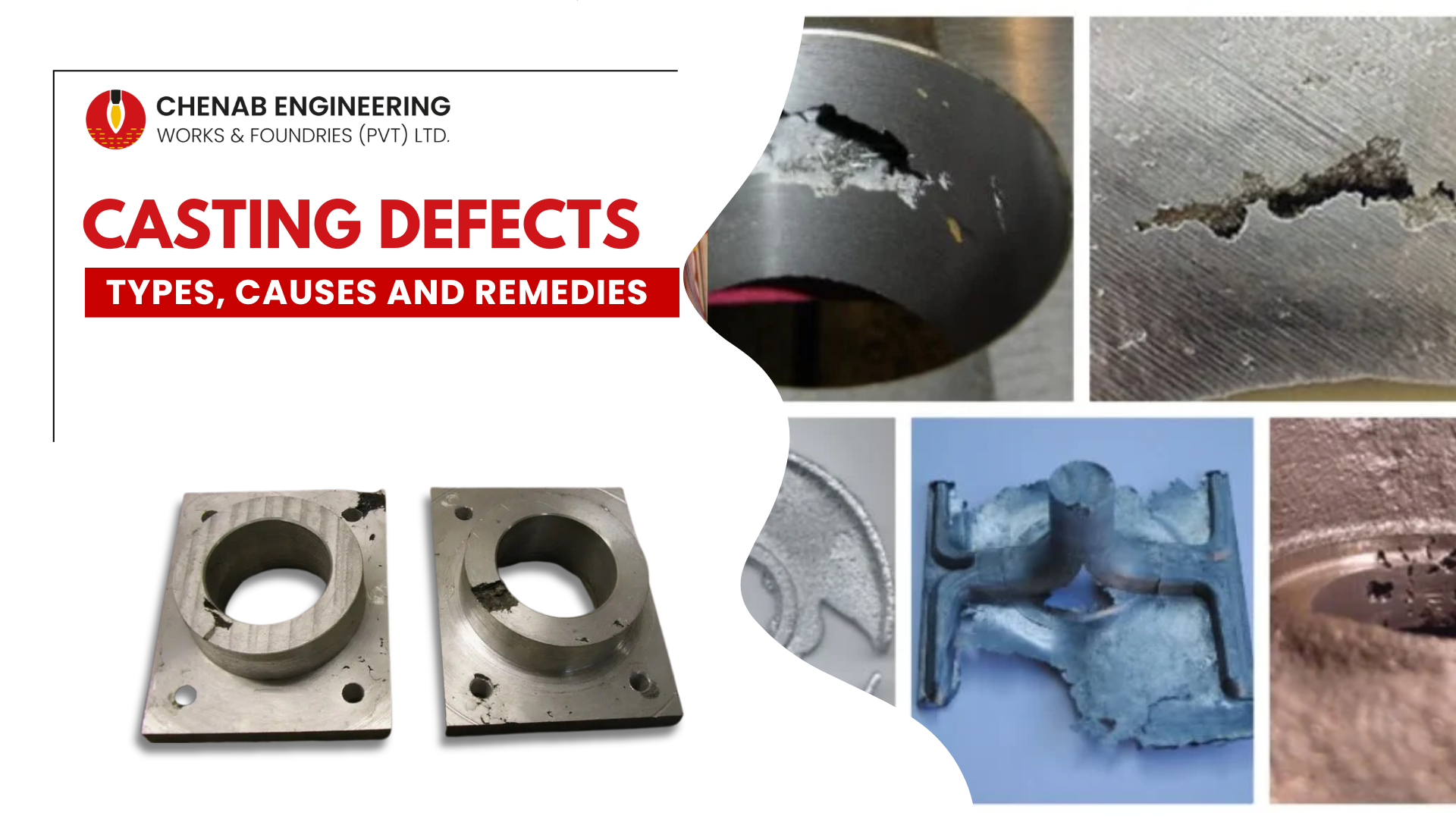Have you ever wondered what can go wrong in the casting process and how it impacts the final product?
The complex procedure of metal casting requires applying extreme pressure on molten metal, which makes it vulnerable to several unfavorable situations that could compromise the quality of the final product. These are casting defects, and manufacturers are quite concerned about them.
Many types of casting defects are possible. Everyone has distinct qualities, reasons, and ways to avoid problems. Mastery of casting requires an understanding of the various related defects and their causes. Consequently, you may proactively avoid these defects and offer your clients high-quality products. This article explores the various types of casting defects, their causes, and effective solutions to prevent them.
Types of Casting Defects:
1. Hot Tear
What is it?
A hot tear/crack fault occurs when internal pressures during solidification cause rips or cracks in the casting.
Causes
- Differential cooling rates between thick and thin sections.
- Inadequate transfer of liquid metal into parts that are cooling down.
- Extreme heat strains are caused by metals at high temperatures.
- Deformation caused by molds with insufficient stiffness.
- Mold with inadequate ventilation may lead to gas traps.
Remedies
- Use methods for directed solidification.
- To guarantee complete filling, modify the pouring settings.
- To reduce thermal gradients, lower the pouring temperature.
- When casting, be sure to use the correct handling and support procedures.
- Ensure that trapped gasses can escape via improving mold venting.
2. Open Holes
What is it?
These blowholes show on the surface of the cast and are more visible than subterranean blowholes.
Causes
- Because of the improper gating design, the metal does not flow into the mold cavity sufficiently.
- Inadequate ventilation during casting causes trapped air pockets.
- Not enough metal or too much shrinkage as it solidifies.
- Castings with holes in them are the result of mold deterioration or erosion.
- Before the mold was filled, the material solidified because the pouring temperature was too low.
Remedies
- Enhance metal flow and distribution by adjusting the gating mechanism.
- Prevent trapped air pockets by improving mold venting.
- Raising the pouring temperature will prevent solidification too soon and guarantee that the mold is filled to the top.
3. Metal Penetration
What is it?
Melted metal seeping into the mold surface causes a metal penetration fault, which leads to rough or uneven casting surfaces.
Causes
- Metal becomes too fluid due to high pouring temperature.
- The metal flow is turbulent due to the improper design of the gating mechanism.
- Metals with a high viscosity make it difficult to fill complex mold features.
Remedies
- To manage the flow of metal, lower the pouring temperature.
- Make sure the mold surfaces are clean and ready to cast before you begin.
- Evaluate and enhance gating design with the use of simulation tools.
4. Warping
What is it?
If the casting twists or deforms as a result of internal stresses or uneven cooling, it may acquire a warping fault.
Causes
- During solidification, cooling rates are not uniform.
- Metals at high temperatures have rapid thermal expansion.
- Overheating in certain areas is caused by insufficient cooling systems.
Remedies
- To reduce the severity of temperature gradients, regulate the mold’s temperature.
- Preheating molds could reduce thermal shock.
- To control temperature differentials, use cooling devices like chill blocks or baffles.
5. Cold Shut
There is a surface line visible, and it is a particular kind of surface imperfection. Melted metal flows into the mold through two gates; when these streams meet at a low temperature, they do not fuse and solidify, resulting in a cold shut that shows as a line on the casting. It appears to be a round-edged crack.
Causes:
- Poor gating system
- Low melting temperature
- Lack of fluidity
Remedies:
- Improved gating system.
- Proper pouring temperature.
6. Surface Blowhole
What is it?
Pinholes are smaller than blowholes, or “blows.” A subsurface blowhole appears on the inside of a cast and is frequently invisible until it has been machined.
Causes
- Insufficient ventilation or air escape routes within the mold.
- Polluting the molten metal with gasses or moisture.
- High pouring temperature is the source of the extreme evolution of gases.
- Insufficient strength or inadequate compaction of the mold.
- Turbulence resulted from a gating mechanism that was improperly built during filling.
Remedies
- To guarantee proper air escape, improve the venting of mold.
- To decrease the amount of moisture, preheat the molds.
- Degassing of molten metal before pouring.
- Reduce turbulence by optimizing the pouring settings.
- Find a way to make molds that are stronger and more compact using new methods or materials.
Conclusion
The complex nature of the metal casting process can result in a variety of surface imperfections. Gaining a better understanding of these casting defects can increase your chances of casting quality control. To ensure that your castings are of the highest quality, you must have a complete understanding of casting defects and how to fix them. Foundries may reduce errors and provide better goods by using cutting-edge technologies, creating better molds, and maintaining strict quality control procedures.





